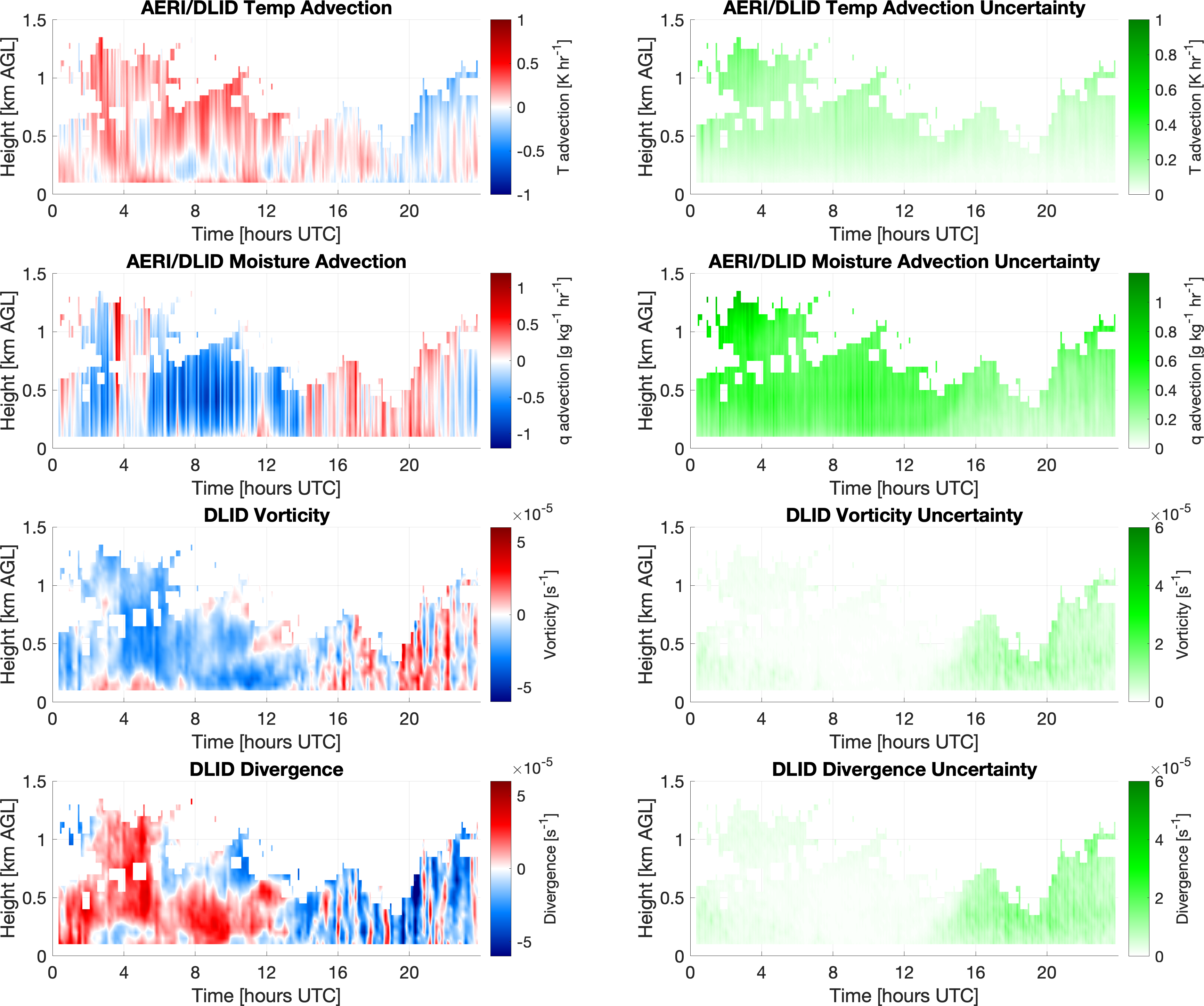Measuring advection and other field quantities at ARM's SGP observatory
Submitter
Wagner, Timothy — University of Wisconsin–Madison
Area of Research
Atmospheric Thermodynamics and Vertical Structures
Journal Reference
Wagner T, D Turner, T Heus, and W Blumberg. 2022. "Observing Profiles of Derived Kinematic Field Quantities Using a Network of Profiling Sites." Journal of Atmospheric and Oceanic Technology, 39(3), 10.1175/JTECH-D-21-0061.1.
Science

Figure 2. Correlation between novel and traditional methods of calculating advection, vorticity, and divergence using simulated observations from the High-Resolution Rapid Refresh model. The peak in correlation at the SGP domain size shows these sites are well suited to make these observations. From journal.

Figure 1. Time/height cross-sections of AERI and Doppler lidar observations of advection, vorticity, and divergence for the four boundary facility sites along with their derived uncertainties for August 8, 2017. From journal.
Wind changes the temperature or humidity of a local environment by blowing in new air with different characteristics through a process called advection. This research investigates using the profiling sites in the ARM Southern Great Plains (SGP) observatory to measure advection, as well as the related quantities of vorticity and divergence.
Impact
There are two major causes of change in the observed temperature and humidity of the atmosphere: local impacts, like land surface interactions or precipitation, and advection. ARM and the U.S. Department of Energy's Atmospheric System Research (ASR) program are interested in the atmospheric processes that act on these local scales, and now that advection measurements are feasible, researchers can separate the influence of local processes on the environment from the advection changes.
Summary
The five profiling sites at the ARM SGP facility each host a temperature and water vapor profiler (Atmospheric Emitted Radiance Interferometer, or AERI) and a wind profiler (Doppler lidar). Together they provide a comprehensive portrait of the structure of the lowest kilometer of the atmosphere. These observations can also be used to measure advection, divergence, vorticity, and deformation by evaluating how the winds and thermodynamic observations change from one site to the next. Specifically, principles from vector calculus are used to relate the mean characteristics of wind and thermodynamics from each side of the domain to the wind field properties like advection and vorticity. These measures of advection compare well to advection calculated from numerical model output on a fine-scale grid. The profiling sites, approximately 70 km apart, just happen to be nearly ideal in their spacing for observing advection: any closer, and the uncertainties in the observations tend to overwhelm the calculations; any further apart, and the advection tends to zero.
Keep up with the Atmospheric Observer
Updates on ARM news, events, and opportunities delivered to your inbox
ARM User Profile
ARM welcomes users from all institutions and nations. A free ARM user account is needed to access ARM data.


















